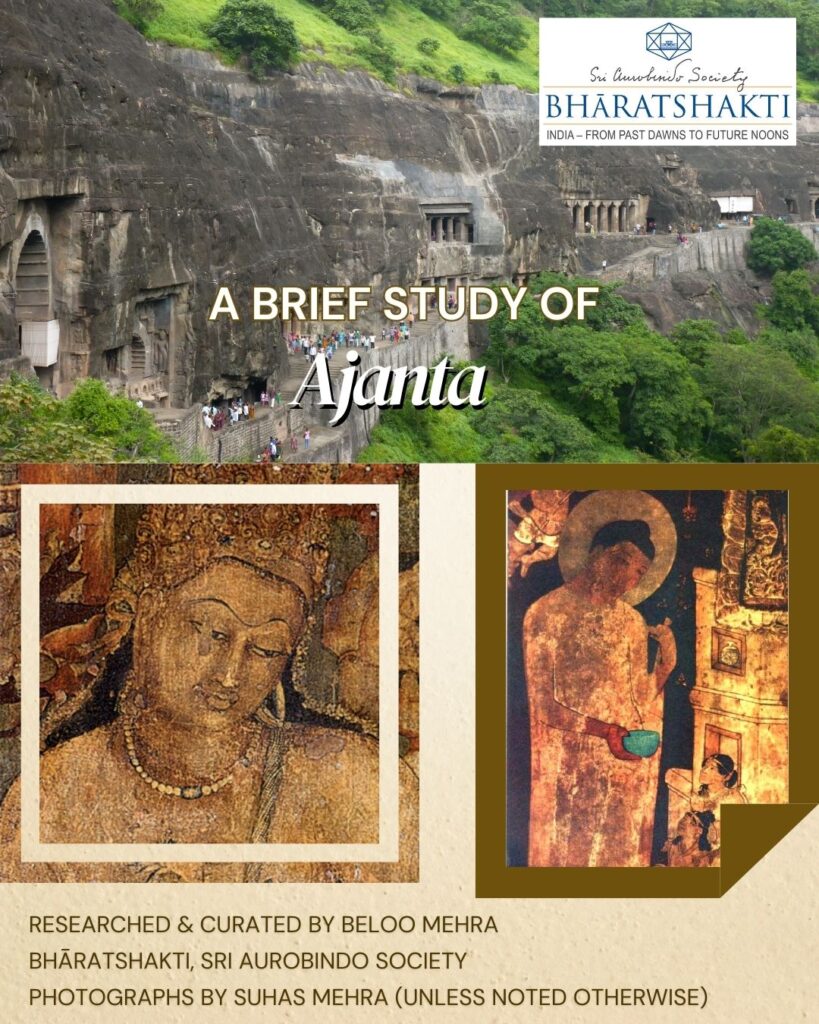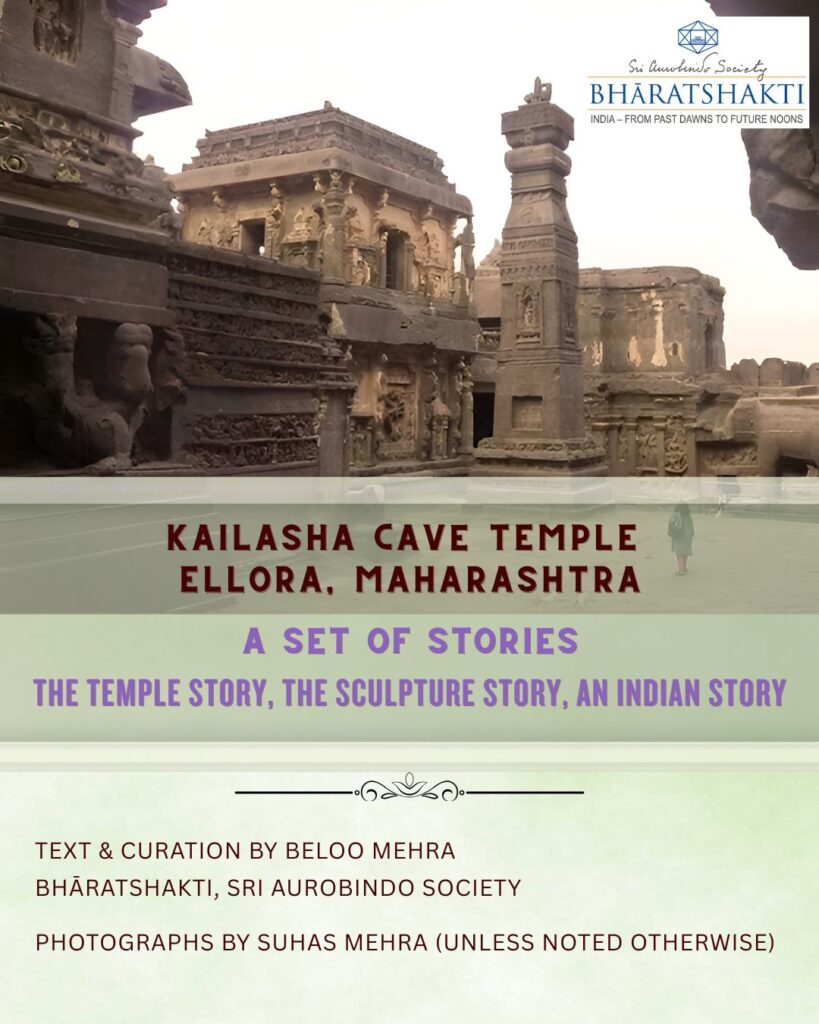Start Date: September 15, 2025
End Date: October 31, 2025
Venue: Creative School, Freedom Land, Bengaluru
As part of the Invoking Shakti: Kala, Sanskriti evam Sadhana workshop BhāratShakti department was invited to design and conduct for 375 students of Creative School, Bengaluru, Dr. Beloo Mehra researched and curated a 150-poster extensive exhibition on Ajanta and Ellora. This work involved going through a large body of photographers from her own collection of her visit to these two places some years back, selecting the right photographs, editing them and organising them in an order so that they convey a narrative that children of ages 14 onwards can easily follow. Relevant text to go with the photos was researched and curated by Dr. Mehra after going through a wide range of texts including Sri Aurobindo’s essays on Indian Art and Culture.
The Ajanta exhibition (87 posters in total) titled, “A Brief Study of Ajanta” starts with a general overview of how in the light of Sri Aurobindo one should approach places of such deep cultural and historical significance such as Ajanta. Relevant quotes of Sri Aurobindo – sometimes broken down in smaller, easy-to-understand phrases – were incorporated as text posters in the exhibition. The narrative of the exhibition includes a few specific details and facts about when the Ajanta caves were exhibited, the dynasties who sponsored such large-scale work, the cultural-historical context in which these Buddhist monasteries and worship halls were built. Some information about the deeper meaning of ‘cave’ in the context of its psychological-spiritual significance for inner journey was also creatively included in the exhibition along with some relevant photographs.
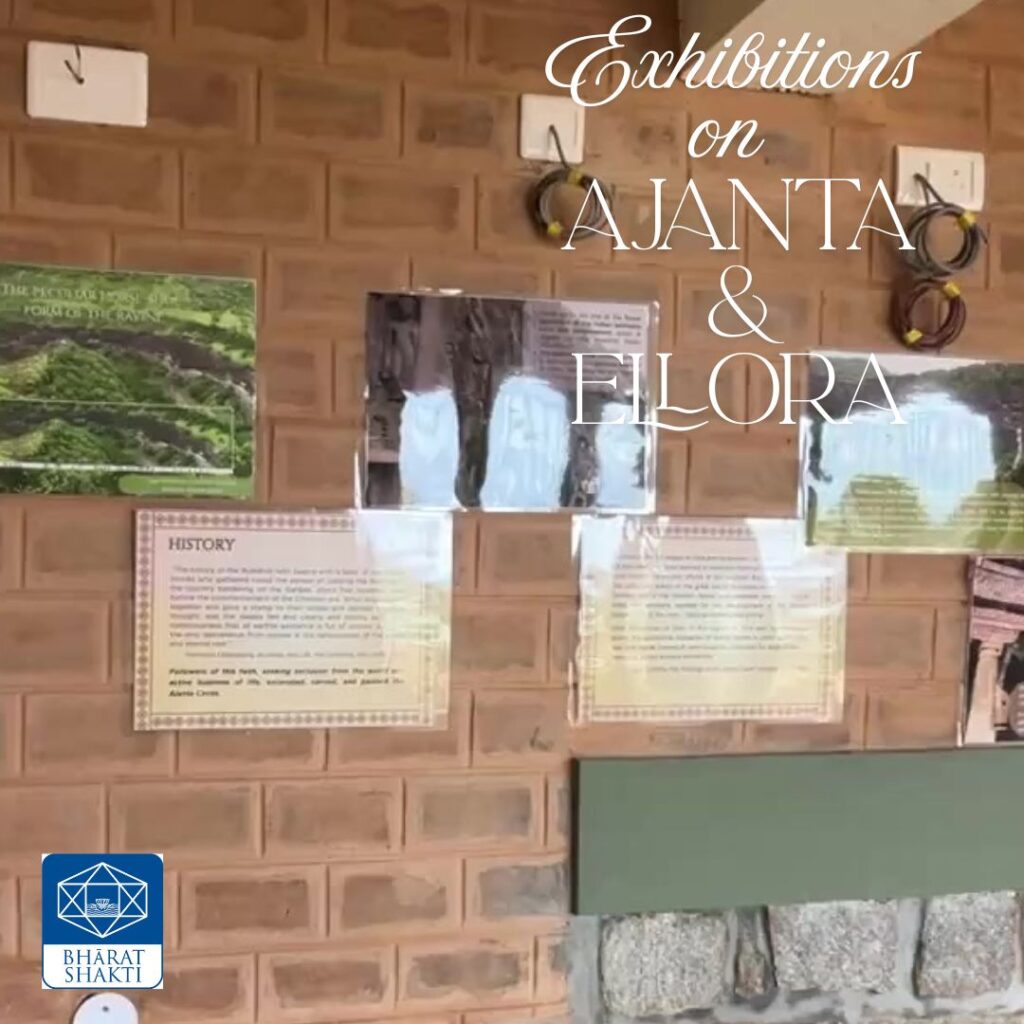
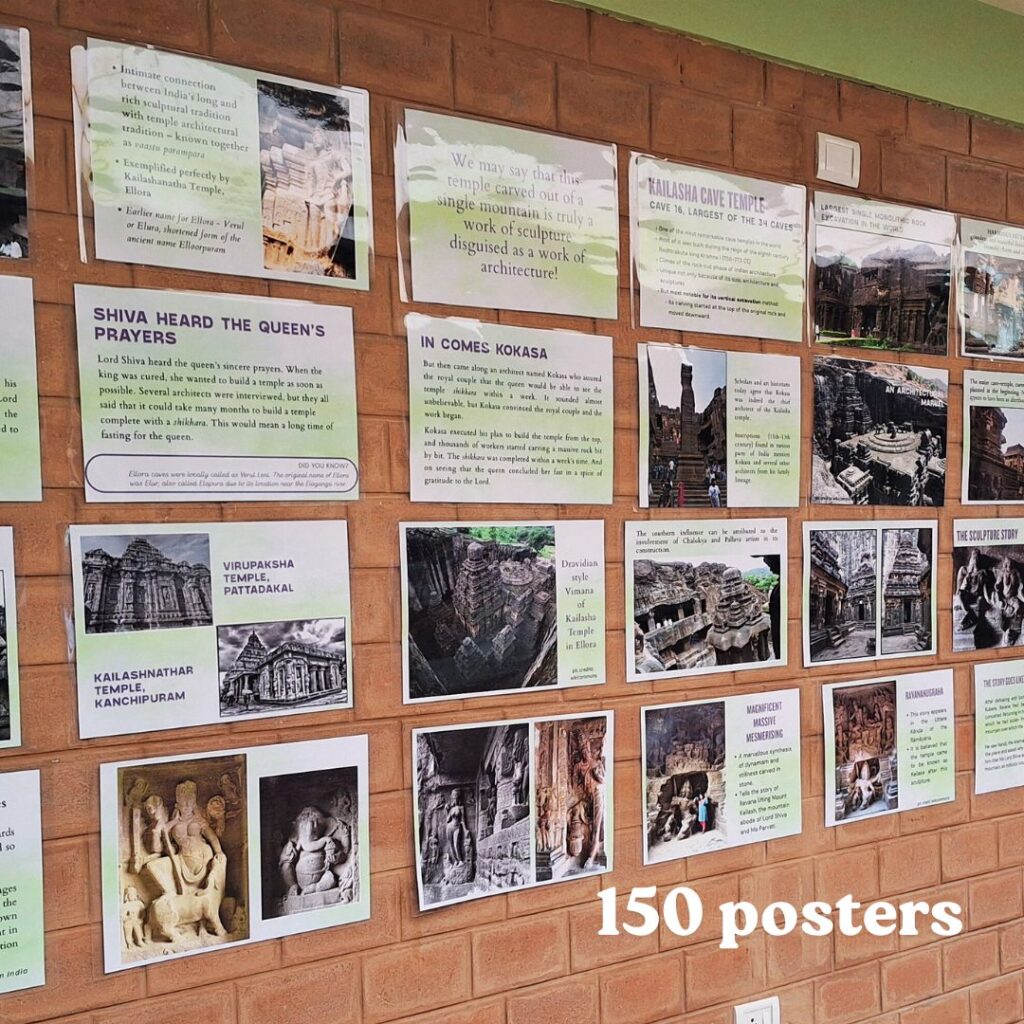
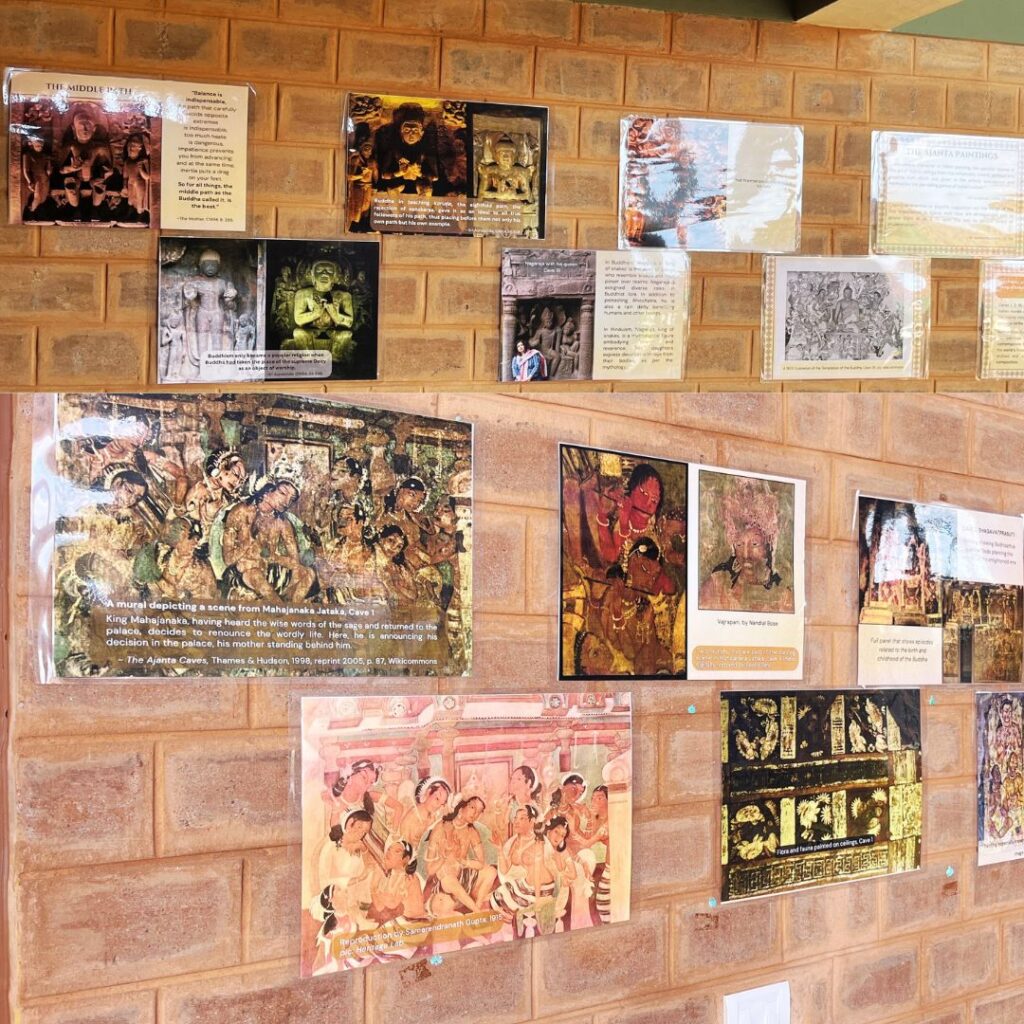
Details of the discovery of Ajanta caves by John Smith in 1819 has been incorporated in the ehxibition along with some necessary references and interesting story of this discovery. Some early sketches made by British and Indian artists are also included — for the most part, copyright free images have been used in preparing the exhibition posters. Some words of Sri Aurobindo were incorproated highlighting the magnificent architectural and sculptural details of several caves. The famous artist Mukul Dey’s account of his pilgrimage to Ajanta was also creatively incorporated in the exhibition.
A whole section of the exhibition is devoted to the appreciation of Ajanta paintings. Details of several of the masterpieces are included along with some digitally enhanced photos available freely on the internet to show contrast between what one may see in the cave and what might have been the original painting. Mention has been made of several of the Jataka tales captured in these murals are also included in the exhibition. Sri Aurobindo’s interpretation of some of the masterpieces of Ajanta paintings are also incorporated creatively in the posters. His and Mother’s words on the inner dimension of art, archictecture and painting also find a place in the exhibition. Also included are some key words from Sri Aurobindo and the Mother on Buddha’s monumental place in Indian spiritual history and the significance of his teachings particularly the Middle Path.
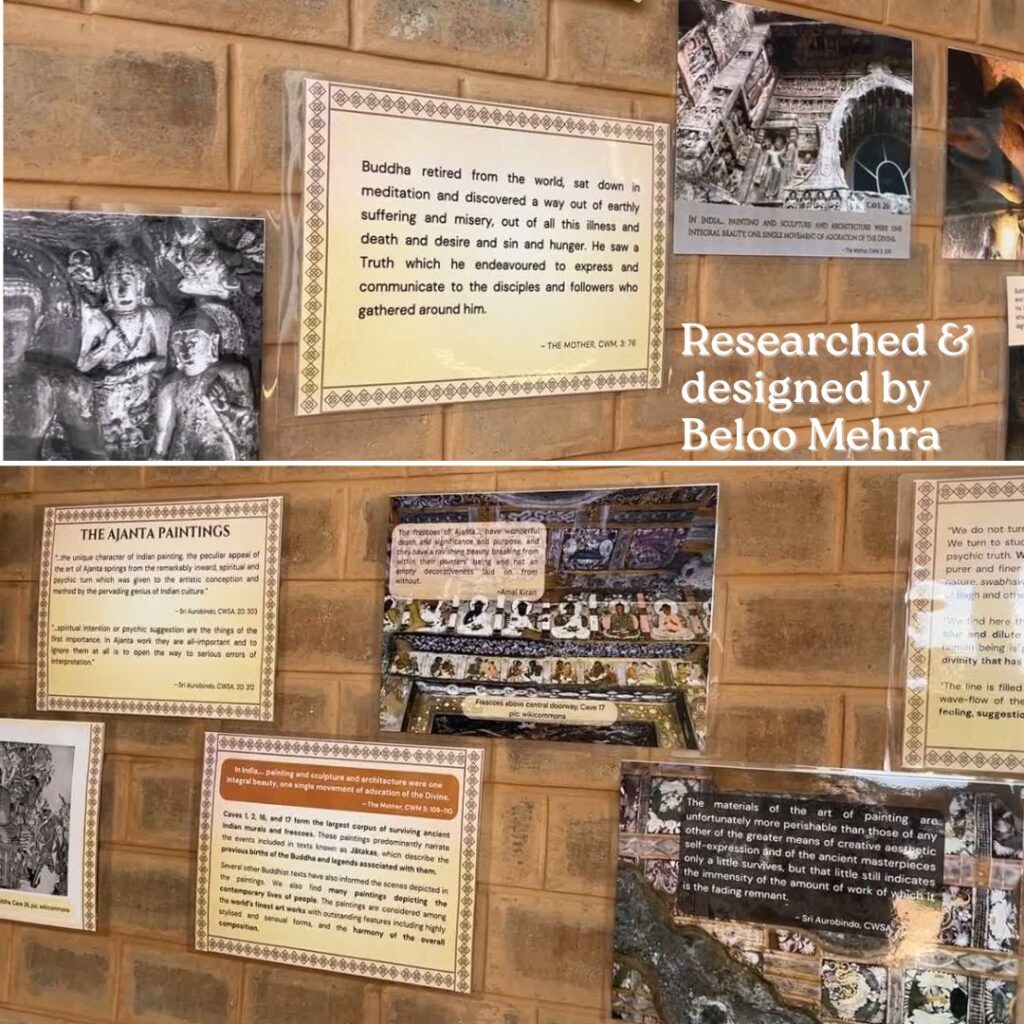
The last section of the Ajanta exhibition is devoted to Modern Indian Painters who have been deeply influenced by the style of painting seen in Ajanta. Their names, a few details and some of their most notable works are included in the exhibition posters. This is done to help students appreciate how an aesthetic and cultural continuity has been an important aspect of the painting traditions of India.
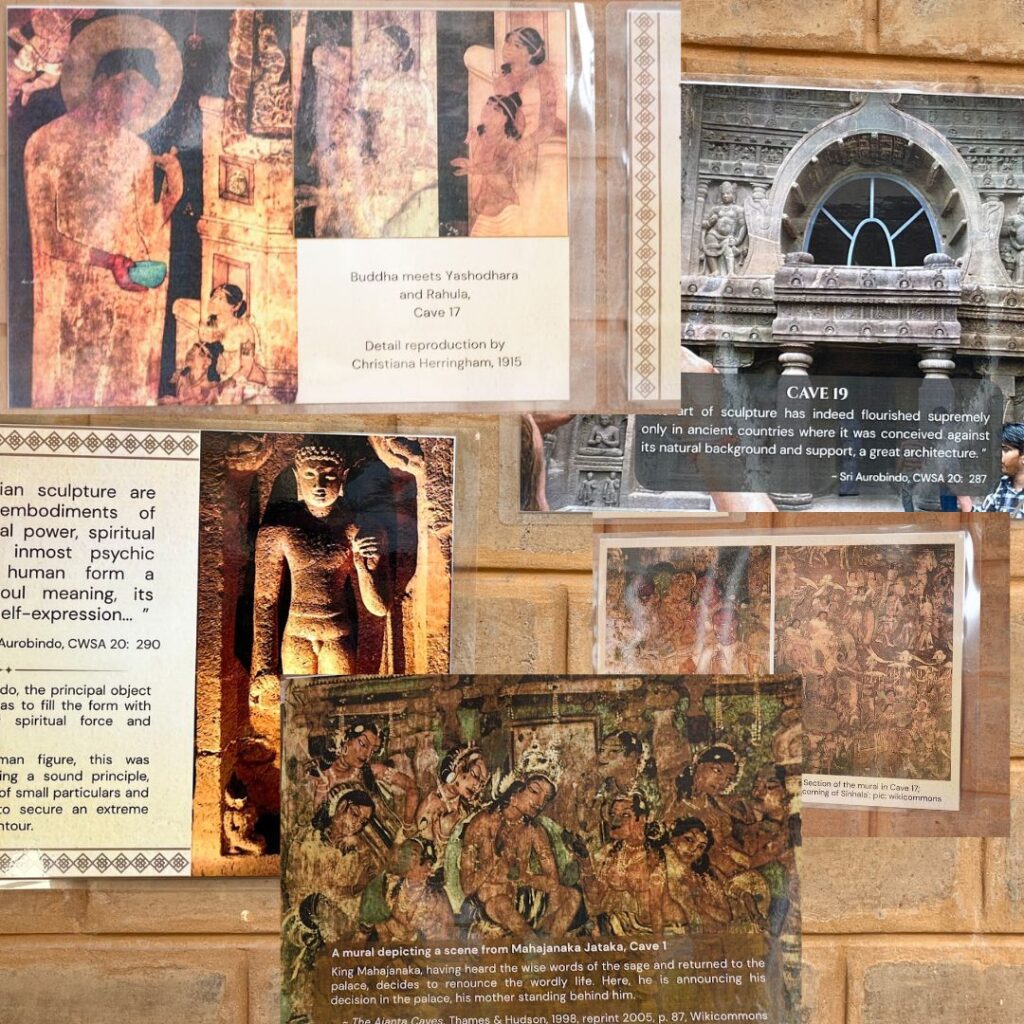
The Ellora Exhibition (63 posters) has been curated somewhat differently – this was done to help students go deeper into a specific cave at Ellora, namely, Cave 16, the Kailasha temple. The idea was to faciliate students’ understanding that India’s long and rich sculptural tradition is closely connected with her temple architectural tradition, known together as vaastu parampara. The exhibition shows that this intimate connection between these two art forms is exemplified perfectly by Kailasha Temple at Ellora caves. Additionally, an experiential account of Dr. Mehra’s visit to Kailasha temple and other caves of Ellora also makes an important part of this exhibition.
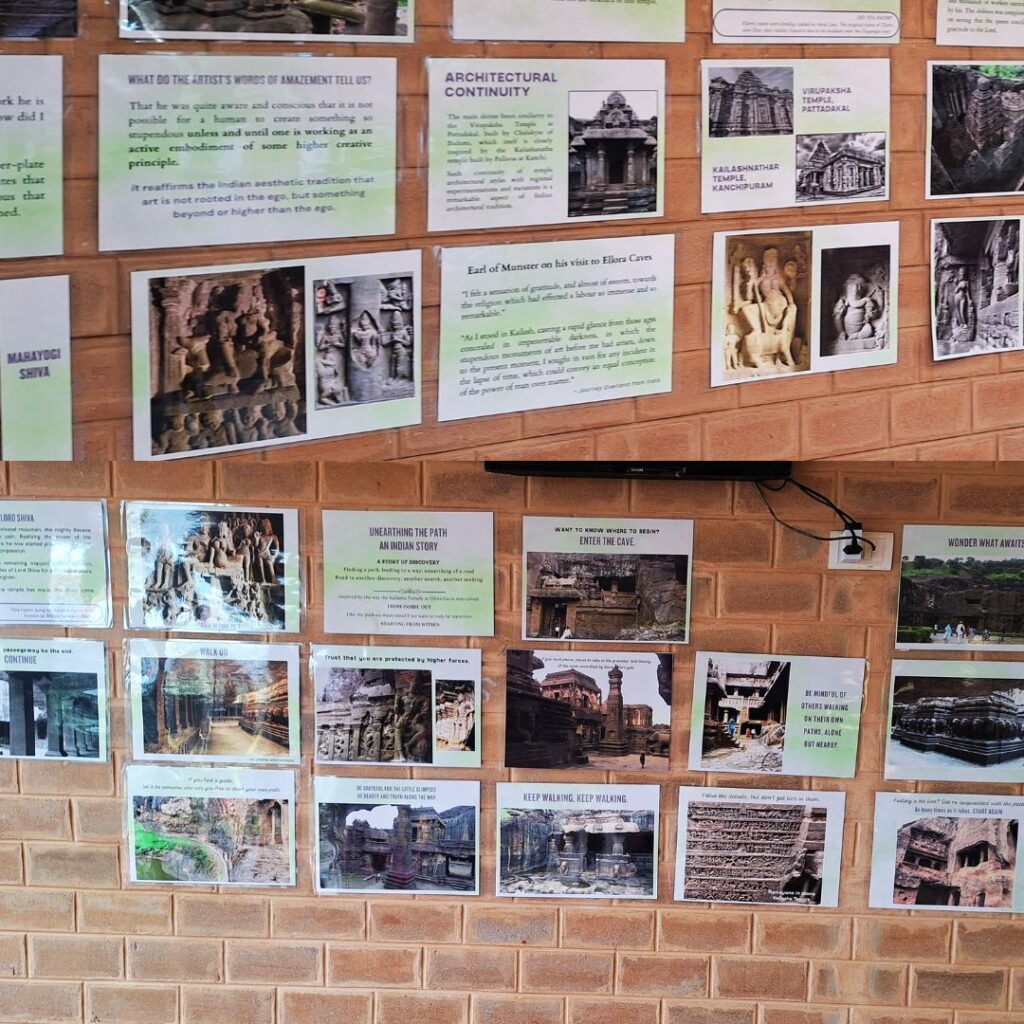
The exhibition gives some historical background regarding the excavation of the cave-temples at Ellora. It highlights that cave number 16 or the Kailasha temple is the largest of the 34 cave temples and monasteries in the complex, and is one of the most remarkable cave temples in the world. Historical details about its construction are also included. What is highlighted mostly in the exhibition is the reason why this cave is considered as the climax of the rock-cut phase of Indian architecture.
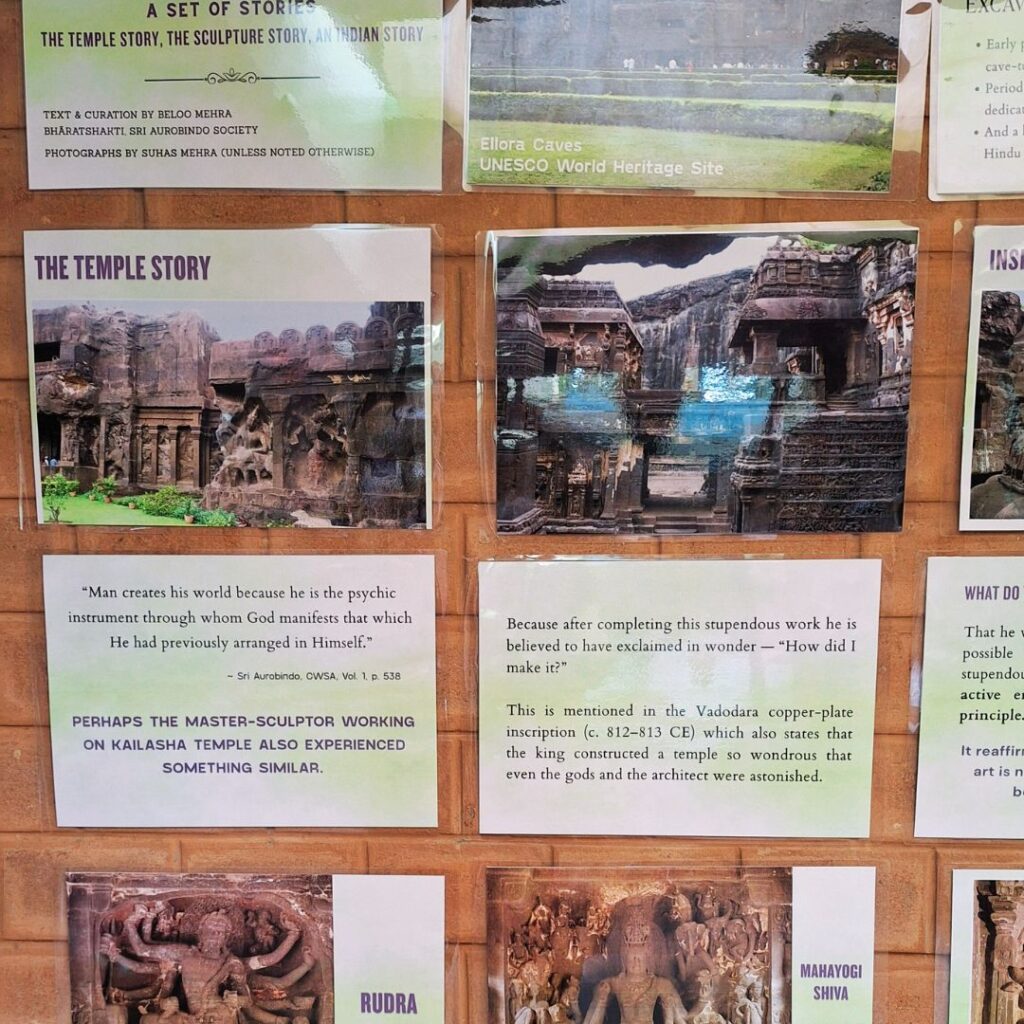
Through a beautiful collection of photographs and carefully curated texts, the exhibition emphasises that Kailasha temple at Ellora is unique not only because of its size, architecture and sculptures, but it is most notable for its vertical excavation method, which means that its carving started at the top of the original rock and moved downward. The exhibition also features an interesting Marathi legend about the temple’s construction, mentioned in a text called Katha-Kalapataru.
The exhibition then also highlights a massive sculpture seen in this cave, which expresses a great synthesis of dynamism and stillness carved in stone and is bound to mesmerise anyone. This magnificent work of art tells the story of Ravana lifting Mount Kailash, the mountain abode of Lord Shiva and Ma Parvati. This story appears in the Uttara Kānda of the Rāmāyana, and is creatively incorporated in the Ellora exhibition curated for Creative school.
The third story to appear in this exhibition is more of an inner journey one may taken when one walks through a massive cave temple such as Kailasha temple at Ellora. This part of the exhibition is something students are encouraged to go through slowly as the words used with appropriately selected photographs are meant to take them within. The idea behind including this section in the exhibition is to encourage students to use outer travel as an opportunity to go within, make travel experience a conscious learning experience about oneself, about others, about the world we are a part of.
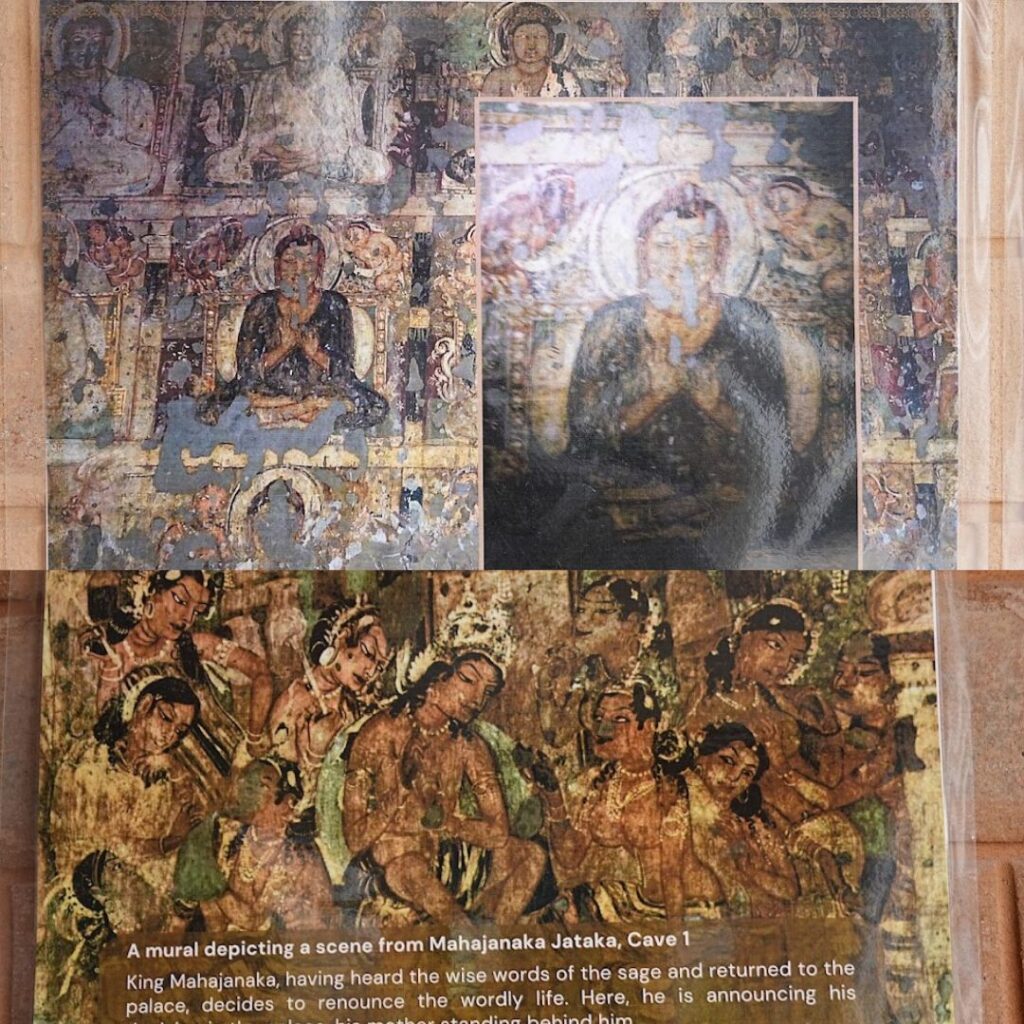
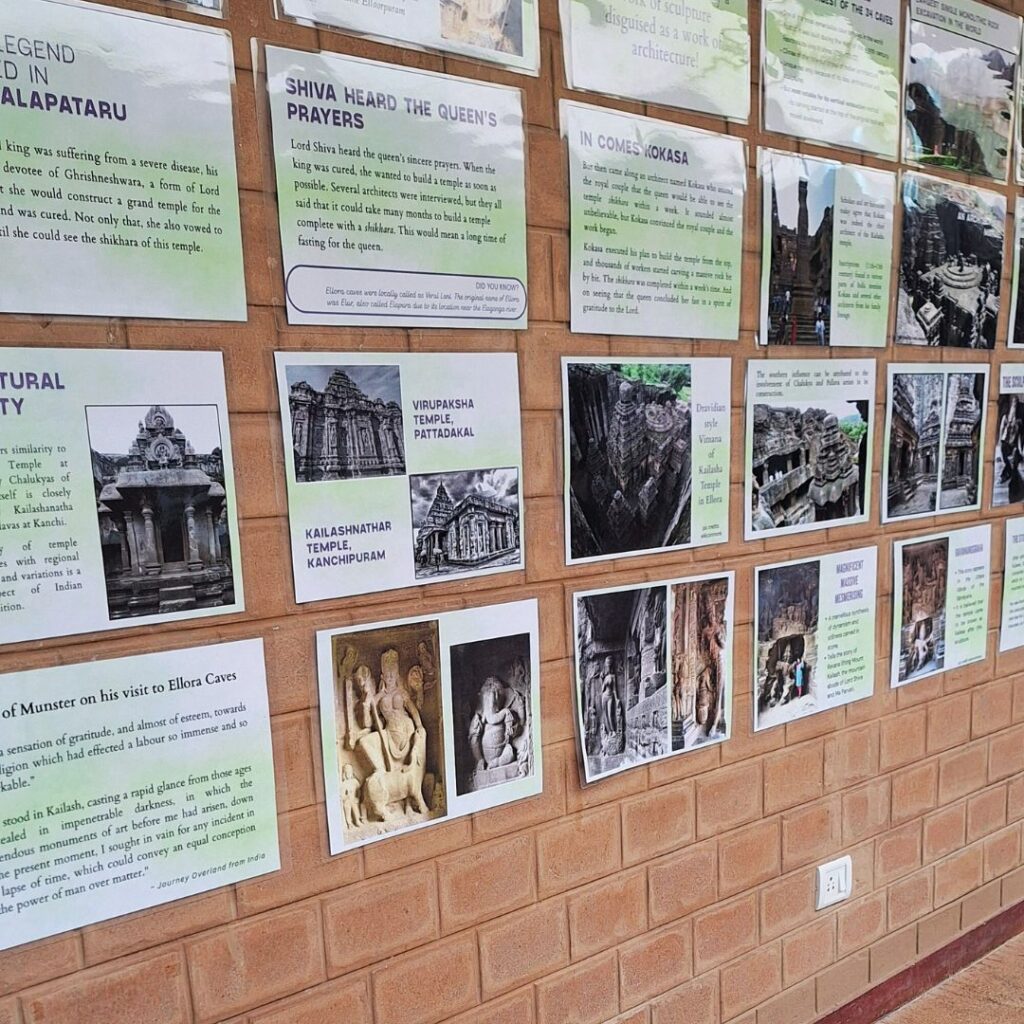
Both these exhibitions were put on display on September 15, 2025 at two different places in the vast campus of Freedom Land. The displays will stay up for a month and a half (may be longer) so that students and teachers can go through the posters at their own pace as a way to prepare themeselves for their upcoming field trips to Ajanta and Ellora. The teachers will be working with smaller groups of children helping them understand if they need any help, and also to go deeper into their own research if something makes them interested in learning more about a specific topic.
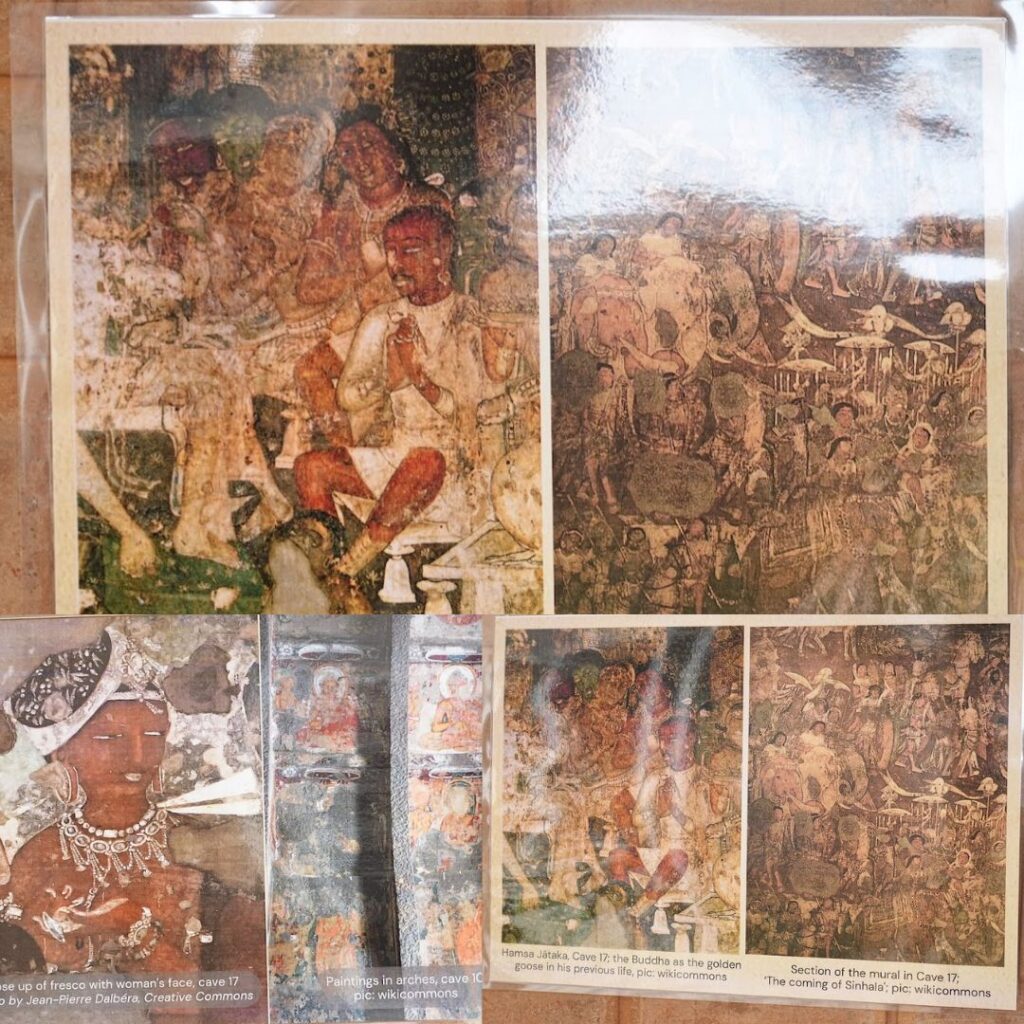
During the three-day-long “Kala, Sanskriti evam Sadhana” workshop from September 15-17, Dr. Mehra gave several orientation sessions to groups of students introducing them to the broad topics covered in both these exhibitions. She also showed them some short documentaries on Ajanta and Ellora to sensitize them for the aesthetic and culturally immersive experience that lies ahead of them when they visit these places. She pointed out which parts of the exhibitions they should go to if they needed to know more about something specific. This was considered a good preparation for the detailed study of the exhibition which the students would go through on their own, with help from their teacherrs.

